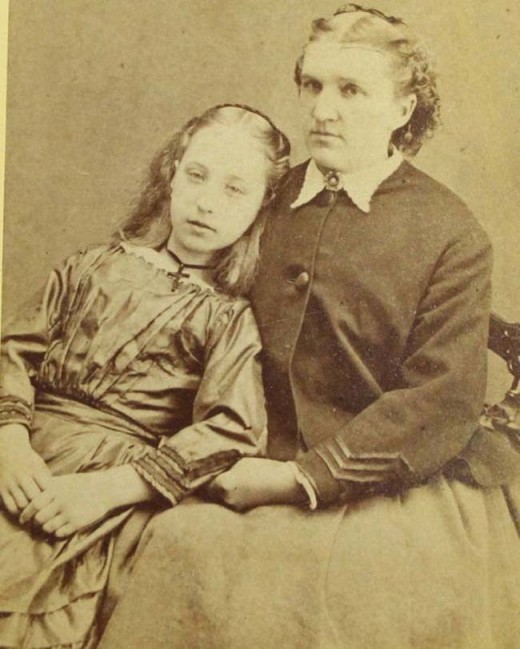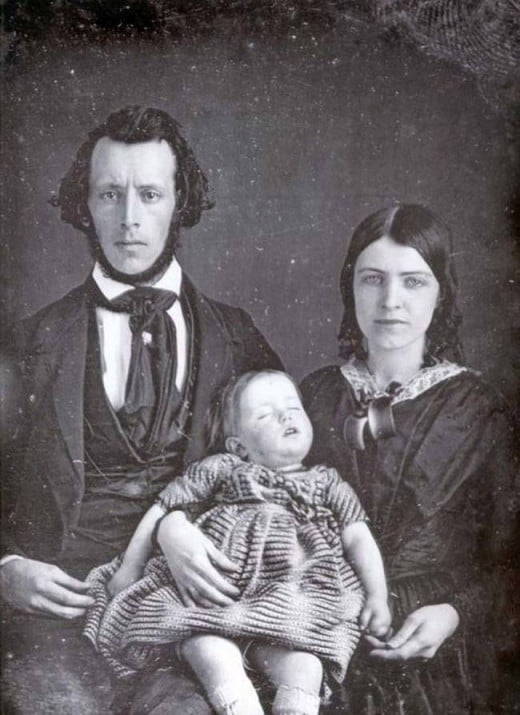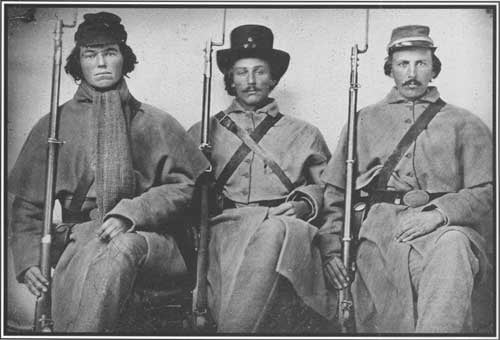A Brief Explanation of Postmortem Photography
What is post mortem photography?
Post mortem photography was the act of taking pictures of family members and loved ones after they had passed away. Many family's did this throughout the 1800s because they wanted a photo of their loved ones because there might not have been one. The camera was still a new invention at the time, so a photographer may have not been available or affordable. Another reason to take a post mortem photo, I think, would be to validate the mourning of the family members. To put all of the mourning into one photo, to give it a sort of tangibility, because we can't see emotions. We can associate them with facial expressions and objects, but they have no real form other than being a product of our experiences and chemical composition.

The woman holding the girl is still alive. If you may notice, she appears to be a bit blurry. That is because of the amount of time it takes to take the picture. Her small movements lead to that blurred state. The girl, however, you can tell is dead. She is as clear as day and she looks to be very doll like, due to her being dead and unmoving. Also, notice the woman's grim expression. One would only assume this to be the child's mother.
After Death Photography Today
In American culture today, the art of post mortem photography no longer has its former glory. In fact, in is widely uncommon and you would very rarely hear it in conversation when not speaking of Victorian culture. That does not mean that some people still do not get these photos in order to have something of their loved one to remember.
However, it is still a practice in the UK, even if it be an unpopular one.
In Iceland, the practice died out in the 1940s, and it is no longer practiced today.
This might be a little graphic to some of you or may hit too close to home, but there are also many websites where you may view modern post mortem photography. I'm not giving out any links because it may be too graphic for some of you and I don't want you to have to see that. But some of these websites include mothers cradling their stillborn children, seeing as that is the only picture they'd ever have of them. Others, though, are much more graphic. But let's not get into detail on that.

An Irish family, living in the southern part of the city, called on me about two years ago to take a picture of their dead son—a young man—with his high hat on. It was necessary to take the stiffened corpse out of the ice-box and prop him up against the wall. The effect was ghastly, but the family were delighted, and thought the hat lent a life-like effect.
— Photographic Times and American Photographer, Volume 12, J. Traill Taylor, Editor, 1882Myths of Post Mortem Photography
- Posing stands; yes, these were used in Victorian picture taking, but they were not used on the dead. They were used on the living to ensure that they were properly steadied. This does not mean that they weren't used on the dead, but the ones meant for the dead required a lot more bodily support because they were unable to hold themselves up, for obvious reasons.
- Clarity, vacant stares, and rigid poses; Clarity didn't mean that the person was dead. There were many things that affected picture taking back then. Some of these things were: stillness, lighting, camera movements, and so on. Vacant stares and rigid poses did not mean death either. See an example of that below.

A Cold Conclusion...
Post mortem photography is certainly a weirder part of history from around the globe, but at least we know why they did it now and that they weren't just mad with misery after losing their loved ones.






